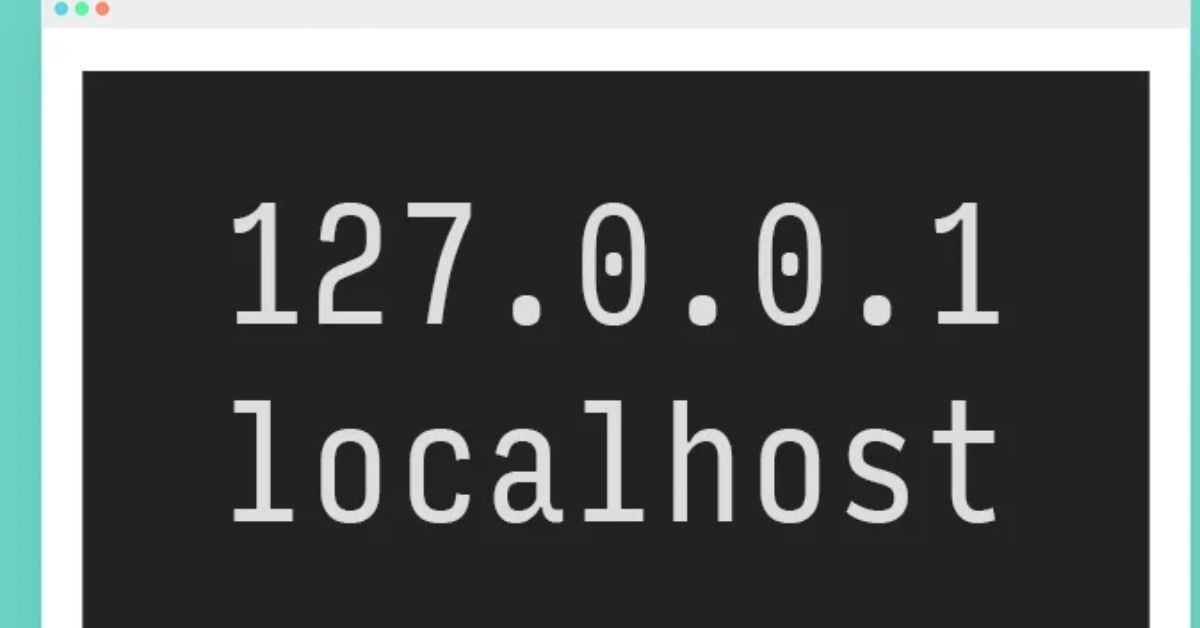Ever stumbled upon the sequence 127.0.0.1:62893 develop an application. It might seem perplexing at first but it holds the key to seamless testing and debugging. This blog post aims to demystify 127.0.0.1:62893 explaining its components uses and how to troubleshoot comon issues associated with it.
Understanding 127.0.0.1:62893
Breaking Down the Components
The code 127.0.0.1:62893 is composed of two main parts:
- 127.0.0.1: This segment represents an IP address known as “localhost.” Essentially it’s a special adress that directs comunication back to your own computer creating an internal loopback.
- 62893: This part signifies a port number which serves as a gateway for various applications to transmit and receive data. While port 62893 isn’t as widely utilized as others it’s occasionally associated with Memcached, a caching system.
The Role of Localhost in Development
Localhost, represented by the IP address 127.0.0.1, is crucial for software development. It allows developers to test their applications in a controlled environment without needing to deploy them on a live server. This means you can debug refine and optimize your code locally before releasing it to the world.
Common Uses of Localhost:
- Local Development: Programmers use localhost to run and test their applications locally.
- Software Demos: Many software demos utilize localhost to showcase features without needing an internet connection.
- Debugging: Localhost aids in pinpointing network-related issues streamlining the debugging process and ensuring smoother application performance.
The Significance of IP Addresses
What is an IP Address?
An IP address acts like a digital address enabling devices to communicate over the internet. It provides a unique identifier for each device on a network ensuring data packets reach their intended destination.
Types of IP Addresses
- IPv4: The older version represented by four sets of numbers (e.g., 192.168.1.1). Due to limited availability these addresses are becoming scarce.
- IPv6: The newer version which uses a larger pool of addresses (e.g. 2001:0db8:85a3:0000:0000:8a2e:0370:7334). This ensures the continued growth of the internet.
Public vs. Private IP Addresses
- Private IP Addresses: Used within local networks such as your home or office. Addresses like 127.0.0.1 fall into this category facilitating internal communication.
- Public IP Addresses: These are accessible over the internet allowing devices to interact globally.
| Type | Example | Usage |
| IPv4 | 192.168.1.1 | Home networks older systems |
| IPv6 | 2001:0db8:85a3:0000:0000:8a2e:0370:7334 | Modern systems internet expansion |
| Private | 127.0.0.1 | Local network communication |
| Public | 8.8.8.8 (Google DNS) | Internet-wide communication |
Understanding Port Numbers
Definition and Purpose
Port numbers act like channels on your TV. They guide data to the right application on your device. Each port number corresponds to a specific service ensuring data reaches the correct destination.
Port Range and Common Uses
Ports range from 0 to 65535 and are categorized as follows:
- Well-Known Ports (0-1023): Reserved for common services like HTTP (port 80) and HTTPS (port 443).
- Registered Ports (1024-49151): Assigned to specific services by the IANA (Internet Assigned Numbers Authority).
- Dynamic/Private Ports (49152-65535): Used for temporary or private purposes.
Specific Use of Port 62893
Port 62893 is not as commonly used as some others, but it’s occasionally associated with Memcached, a distributed memory object caching system. This port allows applications to cache data locally improving performance by reducing the need to retrieve data from the original source repeatedly.
Also read this : Cyberkannadig Chronicles: Navigating the Intersection of Tech and Tradition
Advantages of Using 127.0.0.1:62893
Development and Testing
Using 127.0.0.1:62893 offers several advantages for development and testing:
- Controlled Environment: Test applications internally without the need for an internet connection. This helps identify and fix bugs in a secure isolated environment.
- Bug Identification: Easier debugging since all comunication happens within the same machine.
- Efficient Testing: Faster testing cycles as data doesn’t need to travel over the internet.
Networking and Security
- Understanding Networking: Localhost helps developers learn about client server interactions and TCP/IP protocols.
- Security Benefits: Monitoring port activity on localhost helps detect suspicious atempts to access the system enhancing overall security.
Debugging and Isolation
- Troubleshooting: Localhost aids in pinpointing network related isues eficiently.
- Conflict Prevention: By creating a segregated space for development and testing, localhost prevents conflicts with other aplications.
How 127.0.0.1:62893 Works
Internal Communication Process
The address 127.0.0.1:62893 functions as folows:
- Initiating Communication: An application running on your device initiates communication with another proces.
- Destination: It designates “localhost” (127.0.0.1) as the destination signaling its intention to interact with a component on the same machine.
- Port Directive: The port number (62893) serves as a directive for the operating system indicating which particular service or program should receive the comunication.
Practical Example
Consider a development tool like Visual Studio Code (VS Code). When you start a debuging session VS Code might use 127.0.0.1:62893 to connect to a local server running on your machine. This setup allows the debuger to interact with your aplication in real-time providing valuable insights and enabling you to fix issues quickly.
Is Exposing Port 62893 Safe?
Security Risks
Exposing port 62893 to the public can pose several security risks:
- Security Vulnerabilities: If there are any weaknesses in the service using port 62893 like Memcached hackers could exploit them to breach your system’s security.
- Denial-of-Service (DoS) Attacks: Hackers might launch attacks on port 62893 flooding your system with traffic and causing it to crash leading to downtime and potential data loss.
- Unauthorized Entry: When port 62893 is acessible from the internet anyone could attempt to connect to your Memcached server without permission posing a risk of unauthorized access to sensitive information.
Best Practices for Security
To stay secure it’s best to keep port 62893 restricted to internal use only. Here are some best practices
- Internal Use Only: Keep the port restricted to local network use.
- Firewall Configurations: Set up firewalls to protect against unauthorized acess.
- Regular Audits: Conduct regular security audits to identify and fix potential vulnerabilities.
Troubleshooting Issues with 127.0.0.1:62893
Identifying the Issue
When encountering issues with 127.0.0.1:62893 follow these steps
- Ensure the Service is Running: Confirm that the software or service you’re atempting to access is active on your device. Check if it starts correctly whether it’s a web server or a development tool.
- Verify the Port Number: Ensure that the application is indeed using port 62893. Sometimes conectivity problems arise due to attempts to connect to the wrong port.
- Check Firewall Settings: Your computer’s firewall might block port 62893. To allow localhost traffic through this port review your firewall settings.
Resolving the Issue
If you identify an issue with 127.0.0.1:62893 here’s how to resolve it:
- Start the Service: If the service isn’t running launch it. Typically, web servers or development tools are initiated using a script or command.
- Change Port Numbers: Consider configuring your application to use a diferent port if there’s a conflict or if port 62893 is occupied by another service. This adjustment is often made within the program’s configuration settings.
- Configure Firewall: Create a firewall exception to enable comunication on port 62893. Instructions vary by operating system:
- Windows: Access Control Panel > Windows Defender Firewall > Advanced Settings > System and Security > Inbound Rules, and add a new rule for port 62893.
- Mac/Linux: Modify the firewall settings using Terminal commands, similar to Linux’s iptables.
- Ensure Application-Specific Configuration: Some programs require additional settings to function correctly. Refer to the application’s documentation to ensure all necessary configurations are properly set.
- Use Network Diagnostic Tools: Employ tools like lsof (Unix/Linux) or netstat (Windows) to determine if any aplications are listening on port 62893. If no aplication is utilizing the port there may be an issue with the program’s setup.
Addressing the “Disconnected From The Target VM” Error
Resolving the Disconnected From The Target VM Address 127.0.0.1:62893 error
- Confirm Service Status: Make sure that the service or virtual machine you’re trying to conect to is running and hasn’t crashed or been terminated.
- Verify Port and Firewall Configuration: Double check that port 62893 is correctly configured in your aplication and that your firewall settings permit comunication on this port.
- Check Virtual Machine Network Settings: Ensure that the virtual machine’s network setings allow conections to localhost and port 62893.
- Restart Services: Sometimes simply restarting the service or the virtual machine can resolve connectivity isues.
- Review Logs: Examine the application and system logs for any error messages or warnings that might indicate the root cause of the disconnection.
Final Words
Understanding and utilizing 127.0.0.1:62893 can significantly enhance your development and testing processes. By leveraging localhost, you can create a controlled environment for debugging and optimizing your applications ensuring they run smoothly before deployment.












1 thought on “Cracking the Code of 127.0.0.1:62893: Harnessing Localhost for Seamless Testing”